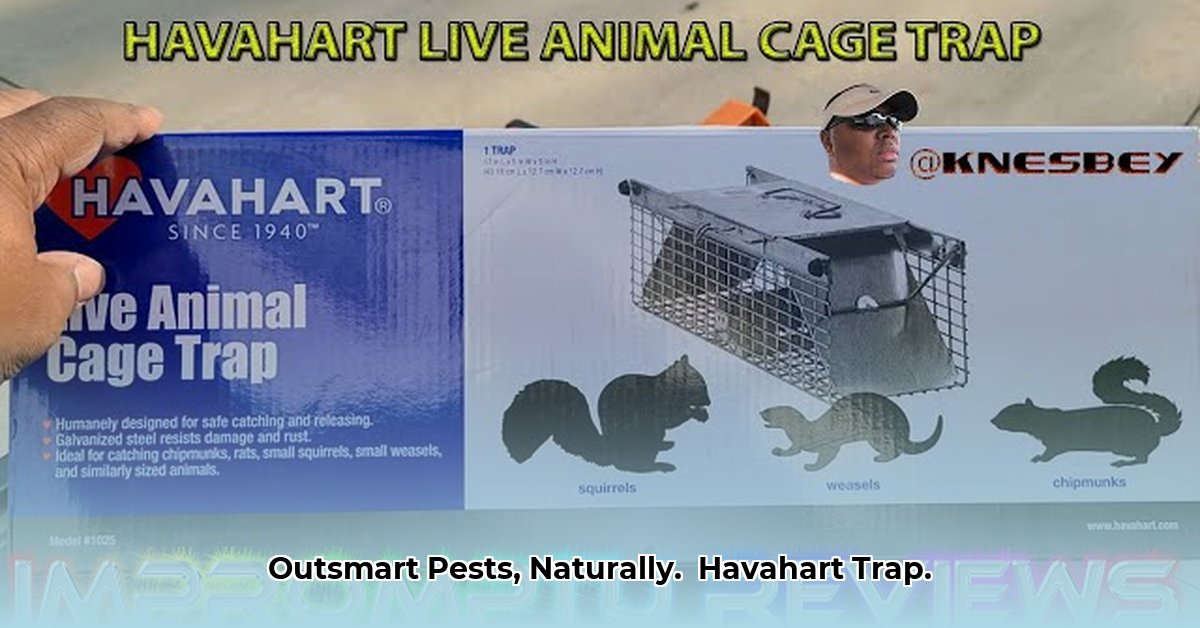
Sustainable farming prioritizes environmental health and economic viability. Integrated Pest Management (IPM) is a cornerstone of this approach, offering a balanced strategy for managing pests without relying solely on harmful chemicals. This guide explores how Havahart traps, available at Tractor Supply, can contribute to a comprehensive IPM plan for your farm. For more information on farm supply options, check out this helpful resource.
Understanding IPM: A Holistic Approach to Pest Management
IPM moves beyond the goal of complete pest eradication. Instead, it focuses on maintaining pest populations below a level that causes significant economic damage to your crops. Think of it as ecosystem management, aiming for balance rather than total war. This approach minimizes the use of chemical pesticides, protecting the environment and improving the health of your soil. Are you ready to embrace a more sustainable approach to pest control?
Havahart Traps: A Humane Tool in Your IPM Arsenal
Havahart traps offer a humane and relatively environmentally friendly method for controlling rodents and other small pests commonly found on farms. These traps, readily available at Tractor Supply, are a valuable tool, but they are most effective when part of a broader IPM strategy. Remember, while effective for certain pests, traps alone won't solve all your problems.
Integrating Havahart Traps into Your IPM Plan: A Practical Guide
Effective trap usage requires more than just buying and setting traps. Follow these steps for optimal results:
Step 1: Precise Pest Identification and Monitoring: Regularly inspect your fields for signs of pest activity – damage to crops, droppings, burrows, etc. This allows you to pinpoint pest locations and the types of pests present. Early detection is crucial for effective IPM.
Step 2: Strategic Trap Placement: Don’t randomly place traps. Position your Havahart traps near areas where pest activity is most apparent—near burrows, trails, or damaged crops. Consider the pests' likely travel patterns and habits.
Step 3: Regular Trap Maintenance: Consistently check and empty your traps, replenishing bait as needed. Dispose of captured animals humanely, adhering to local regulations. Regular cleaning prevents odors that could deter pests.
Step 4: Expanding Your IPM Toolbox: IPM is about combining multiple methods. Augment Havahart traps with other sustainable practices:
- Crop rotation: Rotating crops disrupts pest life cycles.
- Intercropping: Planting diverse crops can deter pests and promote overall farm health.
- Beneficial insects: Encourage natural predators by planting flowers that attract ladybugs or other beneficial insects.
- Physical barriers: Employ fences or other physical barriers to restrict pest access.
Step 5: Continuous Monitoring and Adaptation: Maintain detailed records of your actions—trap locations, catch rates, and observations—to refine your strategy over time. IPM necessitates ongoing adaptation based on your farm’s unique needs and changing pest pressures.
Weighing the Advantages and Disadvantages: A Balanced Perspective
Like any strategy, using Havahart traps within an IPM framework has both benefits and drawbacks.
| Advantage | Disadvantage |
|---|---|
| Humane treatment of pests | Requires consistent monitoring and maintenance. |
| Environmentally friendly compared to chemical controls | May not be effective against all pests or large infestations. |
| Relatively inexpensive | Addresses symptoms, not root causes of pest issues (e.g., habitat problems). |
| Widely available | Effectiveness depends heavily on proper placement and maintenance. |
Building a Sustainable Pest Management System: Beyond the Trap
IPM is an iterative process requiring ongoing learning and adaptation. Havahart traps are one tool in a large and diverse toolkit. Remember that consistent monitoring, detailed record-keeping, and continuous adaptation are crucial for long-term success in sustainable pest management. A healthy farm is a successful farm, and integrated pest management is a critical component of that success.
Key Takeaways: Three Pivotal Points for Successful IPM
- Proactive Monitoring: Regularly assess your fields to detect pests early. This is the first step to effective pest management.
- Diverse Control Strategies: Combine various methods (cultural, biological, physical) for a comprehensive approach. Don't rely solely on one technique.
- Adaptive Management: Continuously monitor and adjust your strategy based on observations and changing conditions. Your farm is a dynamic system.
Implementing IPM Strategically: A Step-by-Step Guide
- Identify and Monitor: Determine the specific pests impacting your crops and establish a consistent monitoring program.
- Establish Economic Thresholds: Decide at what pest population level the costs of control outweigh the economic losses from crop damage.
- Utilize Cultural Practices: Implement crop rotation, intercropping, and sanitation practices to make the environment less favorable for pests.
- Integrate Biological Controls: Explore the use of beneficial insects or other organisms that naturally prey on the pests.
- Chemical Controls (Last Resort): Only use chemical pesticides as a last resort, when other methods fail, and strictly adhere to label instructions. This should always be a measured approach.